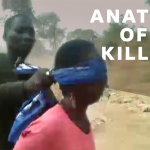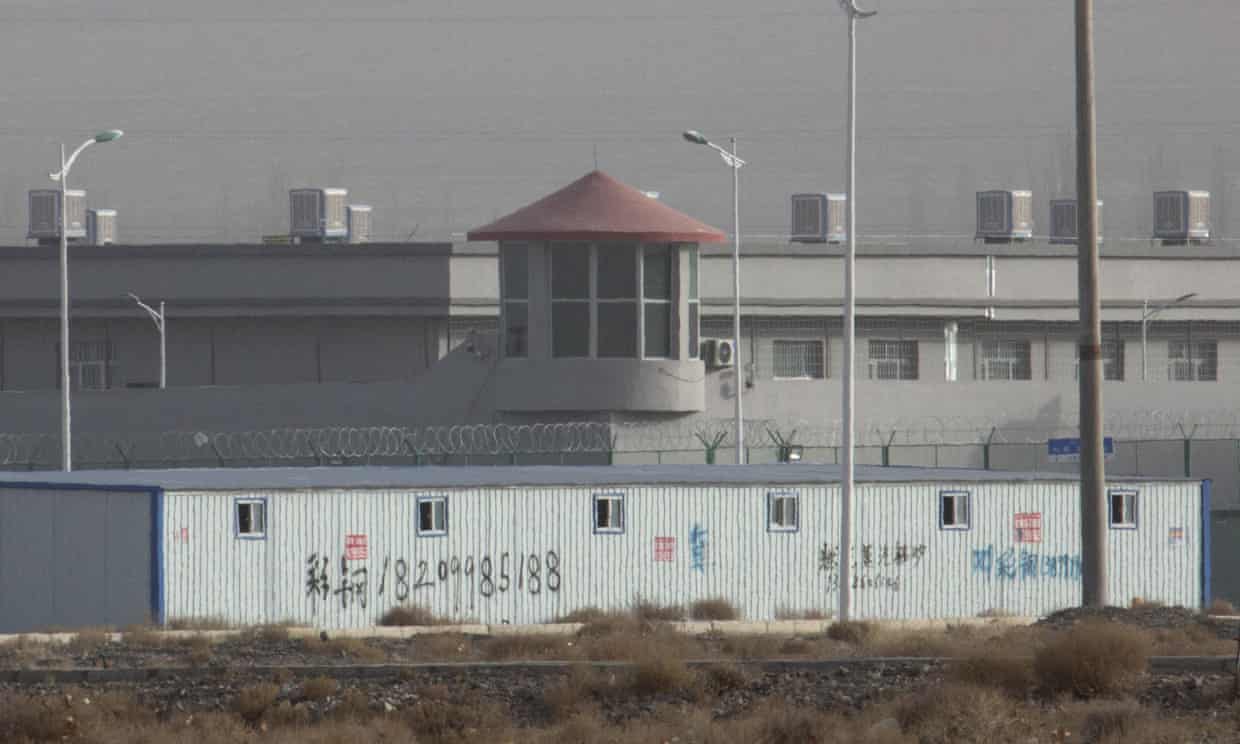Come la BBC ha verificato un video virale dell’uccisione di 2 donne e 2 bambini in Africa
11 min letturaAggiornamento 1 ottobre 2020: Un video divenuto virale nel 2018 mostrava un uccisione a sangue freddo avvenuta in Africa nel 2015 di due donne e due bambini da parte di soldati. A chi diceva che le immagini mostravano un fatto accaduto in Camerun, il ministro delle Comunicazioni del Camerun aveva risposto che si trattava di una «fake news» per tentare di manipolare e distorcere i fatti. Un’inchiesta di BBC News Africa aveva però dimostrato che il video era autentico, mostrato il luogo e la data dell'omicidio e individuato i responsabili del crimine. Un lavoro che aveva avuto come conseguenza in Camerun l’arresto di 7 soldati e l’avvio di un’indagine.
Due anni dopo il tribunale militare camerunense ha condannato quattro soldati a 10 anni di prigione per aver eseguito gli omicidi o essersi resi complici e un altro a due anni per aver filmato e condiviso il video, riporta BBC News. Atri due sono stati invece assolti. Ilaria Allegrozzi, ricercatrice dell'Africa centrale presso Human Rights Watch, ha dichiarato a The Intercept: «Questa è una delle primissime volte in cui abbiamo assistito a sentenze di questo tipo in un Paese in cui è estremamente raro che i soldati siano processati per abusi». «Questo è un primo passo – ha continuato Allegrozzi –, ma ci sono tanti altri casi documentati da organizzazioni per i diritti umani che non sono stati portati in giudizio. Le famiglie di quelle vittime attendono ancora giustizia. Questa è una piccola vittoria sull'impunità, ma l'impunità è ancora diffusa».
Due donne e due bambini vengono condotti da un gruppo di soldati lungo una strada interrata in Africa. Poi vengono fatti fermare, bendati e costretti a inginocchiarsi a terra. Lì, sono giustiziati tutti e quattro con 22 colpi di arma da fuoco.
Questa terribile scena si vede in un video divenuto virale nel 2018, che ha creato dibattito in rete su dove fosse accaduto. Cinque giornalisti di BBC News Africa (insieme alla collaborazione di altre 10 persone, tra giornalisti e analisti) hanno cosi deciso di verificare il video per capire il luogo e la data dell'omicidio e individuare i responsabili di questo crimine. Il risultato finale è un'inchiesta dal titolo "Anatomy of a killing".
In un thread su Twitter, l'emittente britannica ha mostrato i vari passaggi del proprio fact-checking, in un lavoro di verifica che ha unito software e utilizzo di più fonti.
THREAD
In July 2018, a horrifying video began to circulate on social media.
2 women & 2 young children are led away by a group of soldiers. They are blindfolded, forced to the ground, and shot 22 times. #BBCAfricaEye investigated this atrocity. This is what we found... pic.twitter.com/oFEYnTLT6z
— BBC News Africa (@BBCAfrica) 24 settembre 2018
La BBC inizia mostrando il video dell'uccisione delle due donne e dei due bambini, avvertendo che, pur essendo stata tagliata la parte sull'esecuzione, restano comunque immagini angoscianti.
This is the video that went viral. We’ve cut out the ending, but - WARNING – it’s distressing. pic.twitter.com/6JJrdJqurW
— BBC News Africa (@BBCAfrica) 24 settembre 2018
Sui social diverse persone si erano chieste dove fosse avvenuto il fatto: alcuni indicavano il Mali, altri il Camerun.
Immediately, a fierce debate began on social media.
Some said this happened in Cameroon. Others said it was Mali. pic.twitter.com/hbhM2hzEYu
— BBC News Africa (@BBCAfrica) 24 settembre 2018
Lo scorso luglio, in risposta a chi diceva che il crimine fosse successo in Camerun, il governo del paese africano aveva ribattuto che si trattava di notizie false, sostenendo che le armi non erano quelle portate dall'esercito camerunense, che quel modello di tuta mimetica non era usata nell'estremo nord del proprio territorio e sottolineava che i soldati non indossavano un equipaggiamento da combattimento completo.
In July, the Cameroonian govt dismissed the allegations as “Fake News.”
They claimed the guns were not those carried by the Cameroonian military.
They said the camouflage pattern was not used in the Far North.
They asked why the soldiers were not wearing full combat gear. pic.twitter.com/4peZmjISCY
— BBC News Africa (@BBCAfrica) 24 settembre 2018
La BBC ha trovato però indizi che dimostrano che il governo camerunense aveva torto. Per prima cosa i giornalisti hanno cercato di individuare dove era esattamente avvenuta l'uccisione. "Nei primi 40 secondi del video si vede una catena montuosa con un profilo distintivo", scrivono.
So we took a closer look at the video…and found clues that prove the government was wrong.
We’ll start with the location. Where did this happen?
The first 40 seconds of the video capture a mountain range with a distinctive profile pic.twitter.com/Eb70XuGL8I
— BBC News Africa (@BBCAfrica) 24 settembre 2018
I giornalisti, partendo da un suggerimento di una fonte locale, grazie a Google Earth, un software che sviluppa immagini virtuali della Terra in base a foto satellitari, hanno trovato una corrispondenza esatta con quella linea peculiare del crinale montuoso.
After a tip off from a Cameroonian source, we found an exact match for that ridge line on Google Earth pic.twitter.com/niJoH9w3nX
— BBC News Africa (@BBCAfrica) 24 settembre 2018
In questo modo, i giornalisti sono riusciti a stabilire che il crimine si è svolto lungo una strada sterrata fuori da una città chiamata Zelevet, nell'estremo nord del Camerun, vicino al confine con la Nigeria. Un territorio dove i soldati camerunesi stanno combattendo il gruppo jihadista Boko Haram.
It places the scene on a dirt road outside a town called Zelevet, in the Far North of Cameroon, close to the border with Nigeria.
This is the region where Cameroonian soldiers are fighting the jihadist group Boko Haram. pic.twitter.com/9tmS8hPie3
— BBC News Africa (@BBCAfrica) 24 settembre 2018
A questo punto, una volta ottenuta la posizione approssimativa della scena, la BBC analizza altri dettagli presenti nel video, come tracce, edifici, alberi, per poi abbinarli alle caratteristiche visibili sulle immagini satellitari.
Once we had the general location, we looked at other details in the film – tracks, buildings, trees – and matched them precisely to features visible on satellite imagery. pic.twitter.com/IzKuyKzao8
— BBC News Africa (@BBCAfrica) 24 settembre 2018
Il risultato finale è la posizione precisa di dove sono avvenute le esecuzioni.
Putting all this evidence together, we can say with certainty that the killings happened herehttps://t.co/ION682W82n pic.twitter.com/kF0CM0KHbr
— BBC News Africa (@BBCAfrica) 24 settembre 2018
Una volta capito dove, i giornalisti si concentrano sul quando, ancora una volta partendo dagli indizi forniti dal filmato: "Questo edificio è visibile nel video. Ma le immagini satellitari rivelano che, a novembre 2014, i muri intorno non erano ancora stati costruiti. L'uccisione è avvenuta dopo novembre 2014".
When did this happen?
Again, the video contains clues.
This building is visible in the video. But satellite imagery reveals that, back in November 2014, the walls around it had not yet been built.
The killing happened after November 2014. pic.twitter.com/XODYqL5LRY
— BBC News Africa (@BBCAfrica) 24 settembre 2018
Nel video si vede anche un altro edificio. Sempre tramite l'utilizzo di immagini satellitari, la BBC scopre che a febbraio 2016 quella struttura era stata demolita. Quindi le uccisioni sono avvenute prima di febbraio 2016.
The video also shows this building. Satellite images show us that, by February 2016, it had been demolished.
The killings happened before February 2016. pic.twitter.com/EdBqLQHStE
— BBC News Africa (@BBCAfrica) 24 settembre 2018
I giornalisti capiscono poi che gli omicidi sono avvenuti nella stagione calda e secca dell'anno, perché il sentiero, visibile nel video, "appare solo sulle immagini satellitari tra gennaio e aprile". Per questo, spiega la BBC, è probabile che il fatto sia avvenuto all'inizio del 2015.
We know that the murders took place in the hot, dry season, because this footpath – just visible in the video – only appears on the satellite imagery between January and April.
That makes it probable that we’re looking at early 2015 pic.twitter.com/Uotw9w25mY
— BBC News Africa (@BBCAfrica) 24 settembre 2018
Per restringere ulteriormente l'arco temporale individuato, i giornalisti passano ad analizzare le ombre dei soldati presenti nel video. In base a una "semplice formula", la BBC ricava l'angolo e la direzione del sole. Il risultato consente di stabilire che "le uccisioni sono avvenute tra il 20 marzo e il 5 aprile 2015".
Notice that the soldiers, like moving sundials, cast shadows on the track.
A simple formula tells us the angle and direction of the sun.
This corroborates our conclusion on the date, and narrows the timeframe further: the killings happened between March 20 and April 5th 2015 pic.twitter.com/KC8HEvKFuS
— BBC News Africa (@BBCAfrica) 24 settembre 2018
A questo punto, dopo aver capito dove e quando sono state uccise quelle persone, si passa a individuare i responsabili. La BBC afferma innanzitutto che si tratta di membri dell'esercito camerunense.
We know where. We know when.
But who are the men who killed these women and children?
We’ll start by establishing that these are members of the Cameroonian military. pic.twitter.com/SqyL9yOPQf
— BBC News Africa (@BBCAfrica) 24 settembre 2018
Nelle dichiarazioni dello scorso luglio, il governo del Camerun aveva affermato che le armi viste nel video non erano quelle utilizzate dalle truppe camerunesi. La BBC mostra invece che un soldato ha a tracolla un "Zastava M21 prodotto in Serbia" e spiega che l'arma è sì rara nell'Africa sub-sahariana, ma è usata da alcune divisioni dell'esercito camerunense.
The government’s July statement claimed that the guns seen in the video are not those used by Cameroonian troops.
But this is a Serbian-made Zastava M21. It’s rare in sub-Saharan Africa, but it *is* used by some divisions of the Cameroonian army. pic.twitter.com/vZ6xdwpC5O
— BBC News Africa (@BBCAfrica) 24 settembre 2018
Il governo aveva anche dichiarato che i soldati camerunesi nell'estremo nord del paese indossano indumenti pallidi in stile desertico, che non sono quelli che si vedono nel video. Ma la BBC smentisce questa affermazione grazie a delle immagini trovate su Facebook e taggate proprio a Zelevet, che mostrano soldati che indossano la tuta mimetica presente nel filmato.
The govt also claimed that Cameroonian soldiers in the Far North wear pale, desert-style fatigues, not the darker, forest-style camouflage seen in the video.
But we found these images on Facebook – tagged to Zelevet – of soldiers wearing the type of camouflage seen in the video pic.twitter.com/ROVP1q6tcZ
— BBC News Africa (@BBCAfrica) 24 settembre 2018
Le autorità camerunensi avevano anche chiesto perché i soldati nel video non indossassero un equipaggiamento da combattimento completo: caschi pesanti, giubbotti antiproiettile e stivali da ranger. La risposta, spiegano i giornalisti della BBC, è che quel giorno non erano di pattuglia e si trovavano a poche centinaia di metri da un avamposto da combattimento.
The govt also asked why the soldiers in the video were not wearing full combat gear – heavy helmets, bulletproof vests, and rangers boots.
The answer is that they were not out on patrol. They were just a few hundred metres away from this combat outpost pic.twitter.com/lBsnabqXyr
— BBC News Africa (@BBCAfrica) 24 settembre 2018
I giornalisti spiegano anche che sono riusciti a capire che quello indicato è un avamposto da combattimento incrociando le caratteristiche visibili, dettagli presenti in un lavoro di Channel4News, girato in quella zona nel 2015, e immagini satellitari.
We know this is a combat outpost because we found a @Channel4News report that was filmed here in 2015 – and we matched the features visible in that report to the details we see on satellite imagery. pic.twitter.com/nmtD8cm0Ag
— BBC News Africa (@BBCAfrica) 24 settembre 2018
Ad agosto il governo del Camerun fornisce una nuova versione: "Dopo aver negato per settimane che questi omicidi fossero avvenuti nel proprio territorio, il Ministro della Comunicazione ha annunciato che 7 membri dell'esercito erano stati arrestati e indagati".
In August, there was a sudden change in the govt’s position.
After weeks of denying that these killings took place in Cameroon, the Minister of Communication announced that 7 members of the military had been arrested and were under investigation. pic.twitter.com/21idCm0MI4
— BBC News Africa (@BBCAfrica) 24 settembre 2018
La BBC afferma di aver identificato tre uomini che, nel video, hanno effettivamente premuto il grilletto. Uno di questi è "Tchotcho".
We have identified three men who actually pulled the trigger.
One of them is this man, introduced in the video as “Tchotcho” pic.twitter.com/lBtnhmlpNt
— BBC News Africa (@BBCAfrica) 24 settembre 2018
Su Facebook i giornalisti scovano un profilo che collega il soprannome "Tchotcho" a un soldato chiamato Cyriaque Bityala. Questo nome – "Cyriaque Bityala" – compare anche nella lista del governo degli uomini finiti sotto inchiesta.
We found a Facebook profile that links the nickname 'Tchotcho' to a soldier called Cyriaque Bityala.
The name Cyriaque Bityala also appears on the government’s list of men now under investigation. pic.twitter.com/gSN6HMlV0W
— BBC News Africa (@BBCAfrica) 24 settembre 2018
Anche un ex soldato camerunense (che ha chiesto di rimanere anonimo) ha confermato all'emittente britannico che l'uomo individuato era proprio “Tchotcho” Cyrique Bityala.
The BBC also spoke with a former Cameroonian soldier, who asked not to be named.
He confirmed that this is ‘Tchotcho’ Cyrique Bityala pic.twitter.com/vBqkD3ZsiD
— BBC News Africa (@BBCAfrica) 24 settembre 2018
Alla fine del video, si vede di nuovo “Tchotcho” bendare la bambina che sta per uccidere. Pochi secondi dopo, estrae l’arma e apre il fuoco.
At the end of the video, we see him again - blindfolding the litte girl he is about to kill.
A few seconds later, he draws his weapon and opens fire. pic.twitter.com/YB341xENfA
— BBC News Africa (@BBCAfrica) 24 settembre 2018
Inoltre, individuando altre due pistole usate nell'uccisione, i giornalisti sono riusciti a identificare un altro soldato. La fonte della BBC afferma che il suo nome è Barnaba “Gonorso”. Nel video si vede “Gonorso” maneggiare una di queste armi, bendare le donne poco prima di iniziare a sparare.
We identified two other guns used in the killing.
One of the was in the hands of this man. We see him here blindfolding the women with the baby just before the shooting starts.
Our military source identified him as Barnabas ‘Gonorso'. pic.twitter.com/ofOdRpOwI7
— BBC News Africa (@BBCAfrica) 24 settembre 2018
Sebbene, specifica la BBC, i giornalisti non siano stati in grado di confermare al 100% che il soldato si chiamasse Barnaba “Gonorso”, nell’elenco degli uomini del governo ora sotto inchiesta, diffuso 11 giorni dopo, compare un nome molto simile: Barnaba Donossou.
Although we were not able to confirm this identification, a very similar name – Barnabas Donossou – appeared 11 days later in the government’s list of men now under investigation. pic.twitter.com/KNvdDVib6o
— BBC News Africa (@BBCAfrica) 24 settembre 2018
Infine si vede l'arma "Zastava M21" nella mani di un uomo identificato come "Cobra". Di chi si tratta?
The other gun used in the killing is the Zastava M21 we saw earlier.
It’s in the hands of a man identified in the video as “Cobra.”
Who is Cobra? pic.twitter.com/mvWRoPvBbQ
— BBC News Africa (@BBCAfrica) 24 settembre 2018
Nel video si sente un altro soldato rivolgersi a lui di lui gridando: «Tsanga, lascia stare, sono morti». E poi di nuovo, quando continua a sparare: «Basta, Tsanga».
As the women and children are killed, “Cobra” is the last man still firing into the bodies.
A colleague calls out “Tsanga, leave it, they’re dead.”
When he keeps firing, they call again: “That’s enough, Tsanga.” pic.twitter.com/qy9tFhwhvS
— BBC News Africa (@BBCAfrica) 24 settembre 2018
Il nome Tsanga compare anche nell'elenco dei soldati del governo ora sotto inchiesta, suggerendo che "Cobra" è un soprannome del caporale Tsanga.
The name Tsanga also appears on the government’s list of soldiers now under investigation, suggesting that “Cobra” is a nickname for Lance Corporal Tsanga. pic.twitter.com/vVMz2YoJH5
— BBC News Africa (@BBCAfrica) 24 settembre 2018
La BBC ha mostrato quanto scoperto al governo del Camerun, che ha risposto che 7 soldati sono stati arrestati, disarmati e imprigionati mentre erano sotto inchiesta.
We put these finding to the government of Cameroon, who said that 7 soldiers have been arrested, disarmed, and imprisoned while under investigation. pic.twitter.com/3zwlmMlaxe
— BBC News Africa (@BBCAfrica) 24 settembre 2018
Le dichiarazioni del governo fanno capire che tutti questi uomini godono della presunzione di innocenza e che riceveranno un processo equo.
The government statement makes clear that all these men enjoy the presumption of innocence, and that they will be given a fair trial. pic.twitter.com/sFWnE4hmio
— BBC News Africa (@BBCAfrica) 24 settembre 2018
Per le due donne uccise a Zelevet, sottolinea la BBC, non c’è stato però un processo equo. Nessuna presunzione di innocenza per i bambini che sono morti con loro.
The two women killed outside Zelevet received no trial at all.
No presumption of innocence was extended to the children who died with them. pic.twitter.com/WG7SFjQ9ml
— BBC News Africa (@BBCAfrica) 24 settembre 2018







